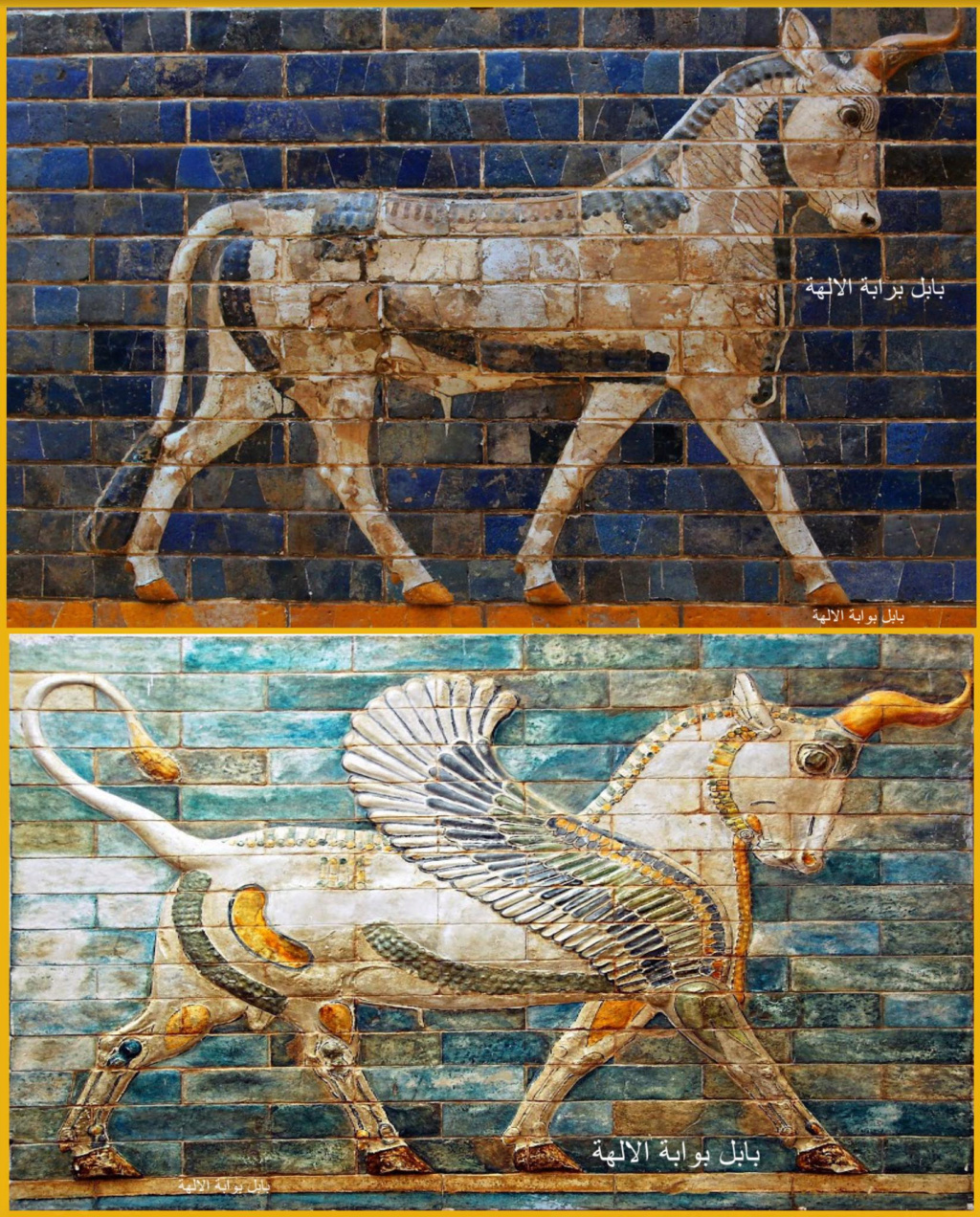Ishtar Gate

Above is a picture of a bull from Mesopotamia, specifically from Babylon, which decorated the Ishtar Gate with other symbols and dates back to the year 575 BC during the reign of King Nebuchadnezzar II.
Nebuchadnezzar, Bukhtenesar, or Bakhtarashah (in Akkadian: ; in Aramaic: ܢܵܒܘܼܟܘܼܕܘܼܪܝܼܐܘܼܨܘܼܼܐܘܼܨܘܼܪ; in Hebrew: נְבוּכַדְנֶצַּר; in Greek: Ναβ ουχοδονόσωρ) is one of the Chaldean kings who ruled Babylon, the eldest son of Nabopolassar, and one of the most powerful kings who ruled Babylon and Mesopotamia, where he made the Chaldean Empire Babylonia was the most powerful empire during his reign, after he fought several wars against the Assyrians and Egyptians. He also overthrew the city of Jerusalem (Jerusalem) twice. The first in the year 597 BC and the second in the year 587 BC, when he captivated the Jewish inhabitants of Jerusalem and ended the rule of the Davidic dynasty. It was also mentioned that he was responsible for building several urban works in Babylon such as the Hanging Gardens, the Temple of Etemenanki, and the Ishtar Gate. The Akkadian name for Nebuchad Nasr is Nebu Koduru Osaurus, which means Nabu, the protector of the borders. Nabu is the god of trade among the Babylonians and he is the son of the god Marduk. The Persians called him Bukhatnezzar, which means “lucky one.” Current academics and historians prefer to call him “Nebuchadnezzar the Great,” or “Nebuchadnezzar II,” because there was another king who used this name before him, namely Nebuchadnezzar I, who ruled Babylon in the twelfth century BC.
Below we see a Persian attempt to imitate the Babylonian bull, dating back to the year 510 BC during the reign of the Achaemenid King Darius.
There is always the original and there is the tradition, and the land of Mesopotamia was the original.
Source: websites

